Input interpretation

1-chloro-2, 2, 2-trifluoroethane
Chemical names and formulas
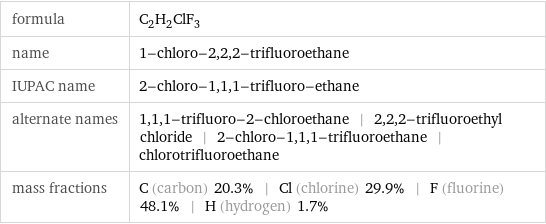
formula | C_2H_2ClF_3 name | 1-chloro-2, 2, 2-trifluoroethane IUPAC name | 2-chloro-1, 1, 1-trifluoro-ethane alternate names | 1, 1, 1-trifluoro-2-chloroethane | 2, 2, 2-trifluoroethyl chloride | 2-chloro-1, 1, 1-trifluoroethane | chlorotrifluoroethane mass fractions | C (carbon) 20.3% | Cl (chlorine) 29.9% | F (fluorine) 48.1% | H (hydrogen) 1.7%
Lewis structure
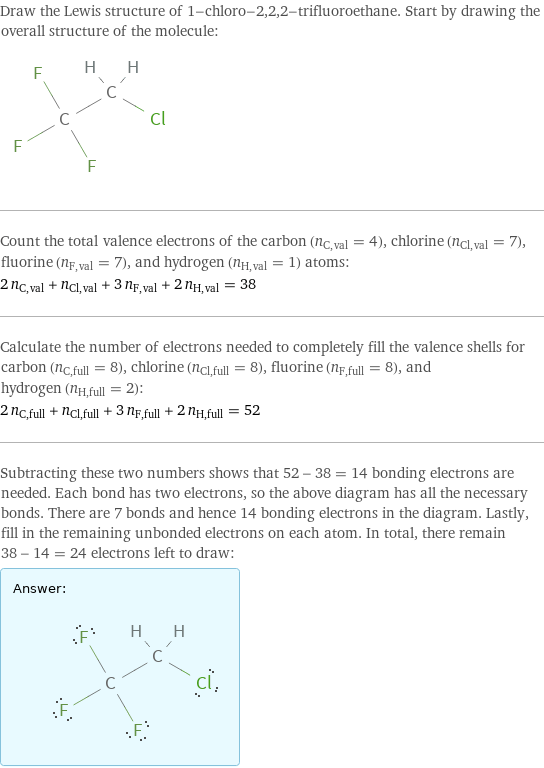
Draw the Lewis structure of 1-chloro-2, 2, 2-trifluoroethane. Start by drawing the overall structure of the molecule: Count the total valence electrons of the carbon (n_C, val = 4), chlorine (n_Cl, val = 7), fluorine (n_F, val = 7), and hydrogen (n_H, val = 1) atoms: 2 n_C, val + n_Cl, val + 3 n_F, val + 2 n_H, val = 38 Calculate the number of electrons needed to completely fill the valence shells for carbon (n_C, full = 8), chlorine (n_Cl, full = 8), fluorine (n_F, full = 8), and hydrogen (n_H, full = 2): 2 n_C, full + n_Cl, full + 3 n_F, full + 2 n_H, full = 52 Subtracting these two numbers shows that 52 - 38 = 14 bonding electrons are needed. Each bond has two electrons, so the above diagram has all the necessary bonds. There are 7 bonds and hence 14 bonding electrons in the diagram. Lastly, fill in the remaining unbonded electrons on each atom. In total, there remain 38 - 14 = 24 electrons left to draw: Answer: | |
3D structure

3D structure
Basic properties
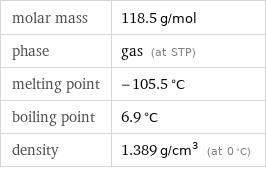
molar mass | 118.5 g/mol phase | gas (at STP) melting point | -105.5 °C boiling point | 6.9 °C density | 1.389 g/cm^3 (at 0 °C)
Units

Gas properties (at STP)
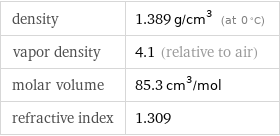
density | 1.389 g/cm^3 (at 0 °C) vapor density | 4.1 (relative to air) molar volume | 85.3 cm^3/mol refractive index | 1.309
Units

Thermodynamic properties

critical temperature | 452 K critical pressure | 4.09 MPa (at STP)
Chemical identifiers
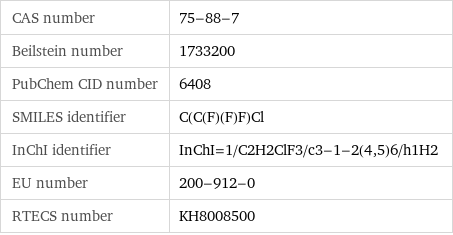
CAS number | 75-88-7 Beilstein number | 1733200 PubChem CID number | 6408 SMILES identifier | C(C(F)(F)F)Cl InChI identifier | InChI=1/C2H2ClF3/c3-1-2(4, 5)6/h1H2 EU number | 200-912-0 RTECS number | KH8008500
Toxicity properties

RTECS classes | tumorigen